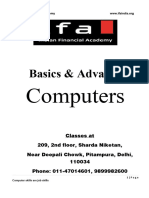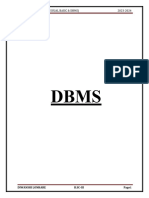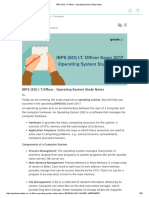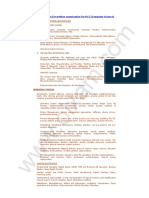100% found this document useful (1 vote)
1K views3 pagesBihar STET Computer Fundamentals Notes
The document covers essential computer fundamentals, including number systems (binary, octal, decimal, hexadecimal) and their conversions. It outlines the evolution of computer generations from vacuum tubes to AI-based systems and describes the functional components of a computer, including the CPU, memory, and I/O devices. Additionally, it explains the differences between primary and secondary memory, lists various input/output devices, and discusses the functions and types of operating systems.
Uploaded by
pankaj yadavCopyright
© © All Rights Reserved
We take content rights seriously. If you suspect this is your content, claim it here.
Available Formats
Download as PDF, TXT or read online on Scribd
100% found this document useful (1 vote)
1K views3 pagesBihar STET Computer Fundamentals Notes
The document covers essential computer fundamentals, including number systems (binary, octal, decimal, hexadecimal) and their conversions. It outlines the evolution of computer generations from vacuum tubes to AI-based systems and describes the functional components of a computer, including the CPU, memory, and I/O devices. Additionally, it explains the differences between primary and secondary memory, lists various input/output devices, and discusses the functions and types of operating systems.
Uploaded by
pankaj yadavCopyright
© © All Rights Reserved
We take content rights seriously. If you suspect this is your content, claim it here.
Available Formats
Download as PDF, TXT or read online on Scribd
/ 3



























































